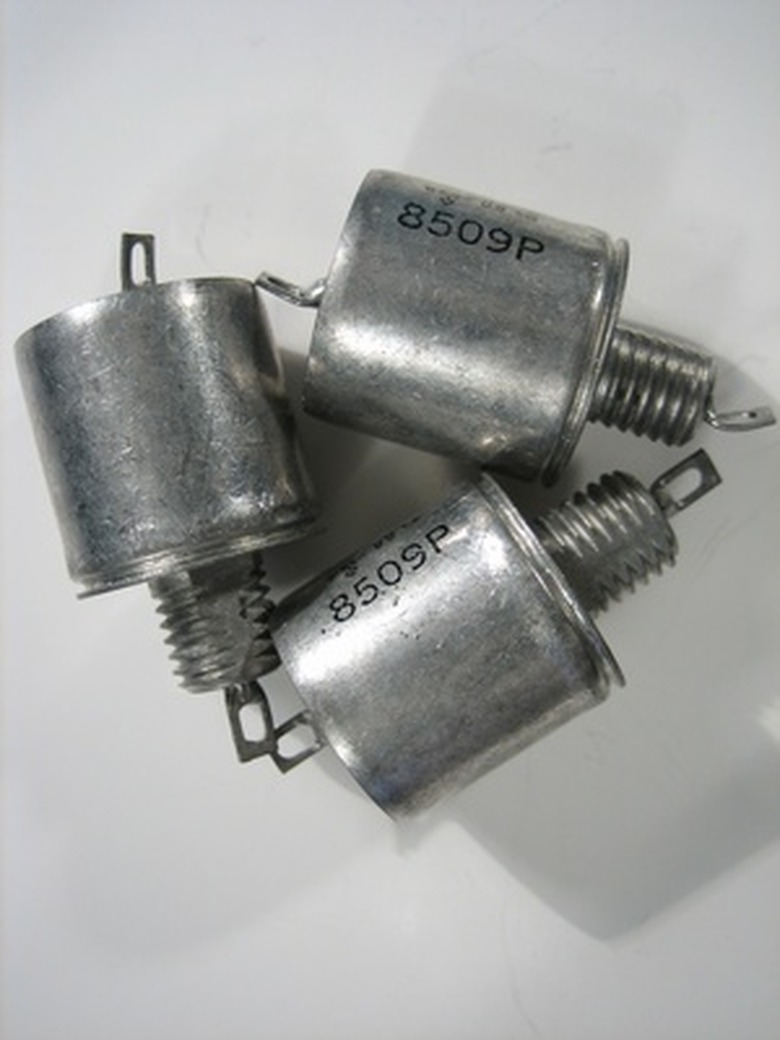How To Build A Battery Isolator
Automotive battery charging circuits are designed to recharge and maintain a single battery. However, automobiles with custom audio systems, electric winches or other high-drain devices may require a second battery to power these devices.
One of the problems with connecting two batteries directly to an automotive charging system is that if one battery is weaker (provides less electrical current at the same voltage) than the other, the charging system may be taxed beyond its design parameters for providing power. This also has the undesirable consequence of draining the "good" battery to equalize the charge in both batteries.
One way to charge both batteries without overtaxing the charging system is by using a battery isolator. A battery isolator is constructed using two diodes, which act as one-way electrical check valves for the charging system.
Step 1
Cut three, 2-foot-long pieces of wire and strip one-half inch of insulation from each wire end.
Step 2
Solder a lug terminal to one end of the first wire, and mark the side of the lug terminal with the letter "A." Solder the free end of the first wire to the anode leads on both diodes.
Step 3
Solder a lug terminal to one end of the second wire, and mark the side of the lug terminal with the number "1." Solder the free end of this wire to the cathode lead on the first diode.
Step 4
Solder a lug terminal to one end of the third wire, and mark the side of the lug terminal with the number "2." Solder the free end of this wire to the cathode lead on the second diode.
Things Needed
- Solder-type lug terminals (3)
- High-current diodes (two; RF1501TF3S or equivalent – See "Resources")
- Soldering iron
- Electronic solder
- Electrical wire (insulated copper, minimum 8 AWG thickness)
- Electrical pliers
- Permanent marker
TL;DR (Too Long; Didn't Read)
When attaching this battery isolator to the charging system, connect the "A" lug terminal to the charging system (typically the "BAT" terminal on an automotive alternator). Attach the "1" lug terminal to the positive terminal on the first battery, and attach the "2" lug terminal to the positive terminal on the second battery.
Warning
The battery isolator will become very hot during use.
References
- "Electronic Devices"; Thomas Floyd; 1996
- Georgia State University: DC Power in Series and Parallel Circuits
Cite This Article
MLA
Sandoval, David. "How To Build A Battery Isolator" sciencing.com, https://www.sciencing.com/build-battery-isolator-7149552/. 24 April 2017.
APA
Sandoval, David. (2017, April 24). How To Build A Battery Isolator. sciencing.com. Retrieved from https://www.sciencing.com/build-battery-isolator-7149552/
Chicago
Sandoval, David. How To Build A Battery Isolator last modified March 24, 2022. https://www.sciencing.com/build-battery-isolator-7149552/
